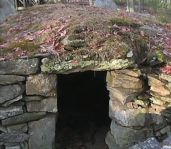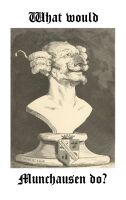|
by John Keel  A Quixotic Adventure into True Horror
A Quixotic Adventure into True Horror
I can remember when "The Men in Black" were an urban legend, a myth, a bogeyman to frighten paranormalists. Now the phrase is a sign on an office door hidden deep in the basement of the Pentagon. No individual is more responsible for this paradigm shift than John Keel, whose Mothman Prophecies exploded onto the paranormal scene in 1975 and changed forever the way we would look at events from the outer limits of human knowledge. John Keel lives in a world in which paranormal phenomena take strange forms: hairy giants, red-eyed and sulphurous, skulking through lovers' lanes; invisible electromagnetic fields which induce terror; winged weirdies such as Mothman; and finally, and most importantly, the Men in Black, a sort of advance guard for the CIA from Outer Elsewhere. These last entities tapped Keel's phone lines, tampered with his mail, spread disinformation and terror among his associates, and generally made his life a living hell until they had distracted him long enough to achieve their nefarious ends: the destruction of the Silver Bridge at Point Pleasant, West Virginia, on December 15, 1967. The purpose behind this act was identical to that of all the entities which Keel calls "ultraterrestrials:" to confuse, annoy, and generally interfere with humanity, as they have since the beginning of time, appearing as gods, fairies, devils, and flying saucer occupants. These and most other paranormal phenomena exist somehow in the spectra of energy beyond the ranges of our physical senses, and make themselves known to us only when they wish to advance their own sinister purposes. By means of light flashes, they hypnotize their subjects, and are thus subsequently able to manipulate the belief systems of the observers. This is Keel's Grand Unified Theory of paranormal phenomena. My first impression of this book was that it is a paranormalist's homage to Ovid's Metamorphoses. Keel's book, like Ovid's poem, lacks structure and form, and shifts fluidly from one narrative to the next, with only the slightest pretext of connection between incidents. This narrative structure is reflected by events in the text itself: everyday objects transform into creatures from the outer dark, lights in the sky turn into flying saucers, phone lines become a tool of hostile forces from another dimension. One of the ramifications of this flowing narrative style is that the reader is not encouraged to consider closely the implications of these events, however. This flaw undermines Keel's own apparent goal in publishing this account, but may also give us clues to understanding events described therein. Frightening though it may be, the ultraterrestrials may actually be the text's true authors. I came to this last conclusion after a recent re-reading, in which the work reminded me not so much of Ovid's Metamorphoses as it recalled Cervantes' Don Quixote, which challenges the narrative voice of the Western novel. Keel is at times a friendly narrator, at others a cynical and battle-weary one, and the reader soon comes to respect and trust him, as he tries to sort facts from disinformation, expresses concern for those who have been used by the ultraterrestrials, and faces the threat of possible psychic attack, injury, or even death at their hands. A careful reading of the work raises questions, however: if Keel was in close contact with these entities, and exposed to the same forces which create delusions in other human subjects, how did he escape being subject to their hypnotic power? There are two possible answers. In the first case, Keel is a superman, somehow capable of deflecting or absorbing without ill effect the malign rays sent forth by these black garbed spooks, and he can perhaps show us a way out of many centuries of deception and trickery. For this, he should be ranked with the luminaries of the Enlightenment--Newton, Galileo, and Bacon, among others--who led the way out of the darkness of superstition and into a new age of clear thinking and empiricism. The second possibility is much more frightening, and the evidence for it is stronger. This narrator whom we have come to trust, who bravely faces these creatures from Outer Elsewhere, is nothing more than a puppet, a conduit for these beings. In such a scenario he is in fact effecting the very actions he rails against throughout the book. He admits that they had some effect on his life, and even if one chooses to believe that he vanquishes them in the end, one is left with the possibility that he has been played: that he was merely led to believe that he had won, that the ultraterrestrials might better continue their games. The narrator of Don Quixote is similarly befuddled by uncertainty regarding his sources, and this leaves the reader wondering about the narrator's credibility, and if he might not have a hidden agenda. Several times in the novel the narrator steals bits from other writers, and shamelessly distorts them to his own ends. These snippets of text, and the narrator's unblushing thievery, distort and undermine the narrator's authority. He is a clear example of the unreliable narrator, and after reading the work, the reader is left with a new understanding of the nature of the Western novel. In Keel's hands--or the hands of his masters--this breakdown of narrative authority becomes a source of horror. Even as Keel rails against the ultraterrestrials, he strengthens their hold on the human mind, enslaving us to their alien whims, by providing a belief system for their continued manipulation of the human race. As Keel himself says, "Belief is the enemy." Does Keel want to break the ultraterrestrials' grip on humanity, or continue it? After reading this work, one does not have an answer to that question. The mere presence of entities such as Mothman or the Men in Black was enough to give me goosebumps, on my first reading: that the seemingly trustworthy narrator might be their unwitting dupe, part of the ultraterrestrials' Operation Trojan Horse, has provided the material for many nightmares. |


